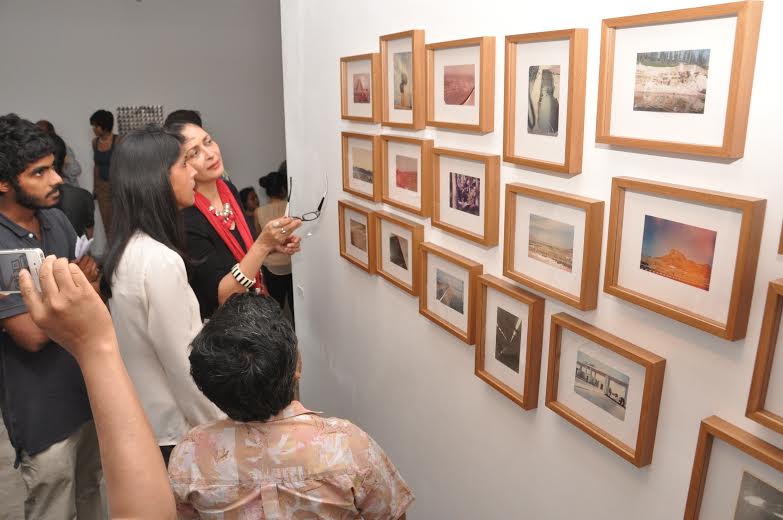When did you realise you wanted to be an artist?
Since young age I was into drawing and painting, but there was no thought in my mind of becoming a professional artist. At high school, I had art as a subject. By that time, however I had realised, I wanted to do something creative. In the fall of 2003, I happened to win the prestigious Madanjeet Singh Art Scholarship, which took me to Pakistan, where I remained till 2009.
You were very young, when you went to Pakistan. Was there any fear of adjustment? How was your overall experience in Pakistan?
I was all of 18 when I received Madanjeet Singh Art Scholarship. Actually, I had already made up my mind to study abroad, so this opportunity was kind of welcome for me. The BFA programme was dynamic and very demanding. I had an O level certificate in art, while my class mates had already qualified A level. I had to start from scratch, which affected my grades at the beginning of the course. However, I picked up fast and passed with distinction.
At Beaconhouse National University, from second year onwards professors did not restrict the students from expressing themselves. This created a level of independence in me. I was lucky to meet people who excelled in specific fields in art.
As for adjustment, I had no problem as I was in a liberal arts college. At that time, Lahore was not so much in the shadow of militancy. It was confined mostly to Swat area.
Tell us about your graphite drawings, as we see displayed in this exhibition.
I created the graphite drawings by rubbing graphite on acid-free paper and folded them in different ways to present configurations and arrangements of geometric shapes and spatial structures, in a frame-by-frame progression of image and time. On a more tangible level, the smooth surface of the paper is dark but reflective, creating frictions and ruptures and at times resembling metal; while revealing the mineral attributes of graphite and hence referring to the tension produced between the delicate, malleable quality of paper and the austere, detached physicality of graphite.
How will you describe your work?
During the course of my fine arts studies in Pakistan, there was a distinct way of reading artwork in general deriving either from landscape or figuration. I presented my work in this context of the body or human figure in particular environments, recounting often personal, individual circumstance.
In the past few years, there has been a gradual shift in these preconceptions and of considering other ways of looking.
My work has become process-oriented as an attempt to negotiate and translate notions of space, which is inseparably connected with perceptions of time. The recent works of drawing series’ and sound are not directly about architecture or the man-made environment but have implications of space, whether anonymous, real, tangible or psychological.
Memory and era sure play an important role in the work. There has been ongoing interest in the surface of materials, in depth and flatness, of layering, fragmenting an image and making it whole again.
The psychological implications of using sound as a way of ‘looking’ has steadily filtered into my practice; the disjunction of the in between, of what remains unseen is what I find interesting.
What sort of ideas steer you through the creative process?
There is nothing decided, actually. So many ideas want to get reflected. My works relate to drawing and referencing architectural spaces. I would call it playfulness with material. Each work as it comes out, not necessarily brings out a concept rather it is more about the process. When I am rubbing or scratching or taking repeated print outs, or even stapling pins on paper. I don't always know why I am doing it. The outcome is the result of different steps and stages.Then of course conceptually also I think about it, where it is coming from, why you are doing it, those questions come to your mind.
Tell us about the different mediums you that you experiment with?
I paint, I work with sound, wood, plaster, velvet, empty spaces.
My paintings are usually very, very photorealistic. I use photographs as referential document. Before painting, I do my study, and then put my work on paper. The drawing is exactly same as the photo. With plaster I made chocolate wrappings and displayed them against negative space to create three dimensional effect. I have used velvet for text based painting. Here again it is the idea of drawing, whether it is piercing the paper with the staple or cutting the paper or stitching on to textile or covering up the surface, its the same.
How do you work with sound?
A sound is installed in an empty space, which can be a recorded sound or my own sound. The work can be agenda based also, like I have used this medium to express gender issues. I have produced work based on ambiance sound, also. The end result reflects the ideas hovering in my mind at the time of creation.
(India Blooms News Service)








